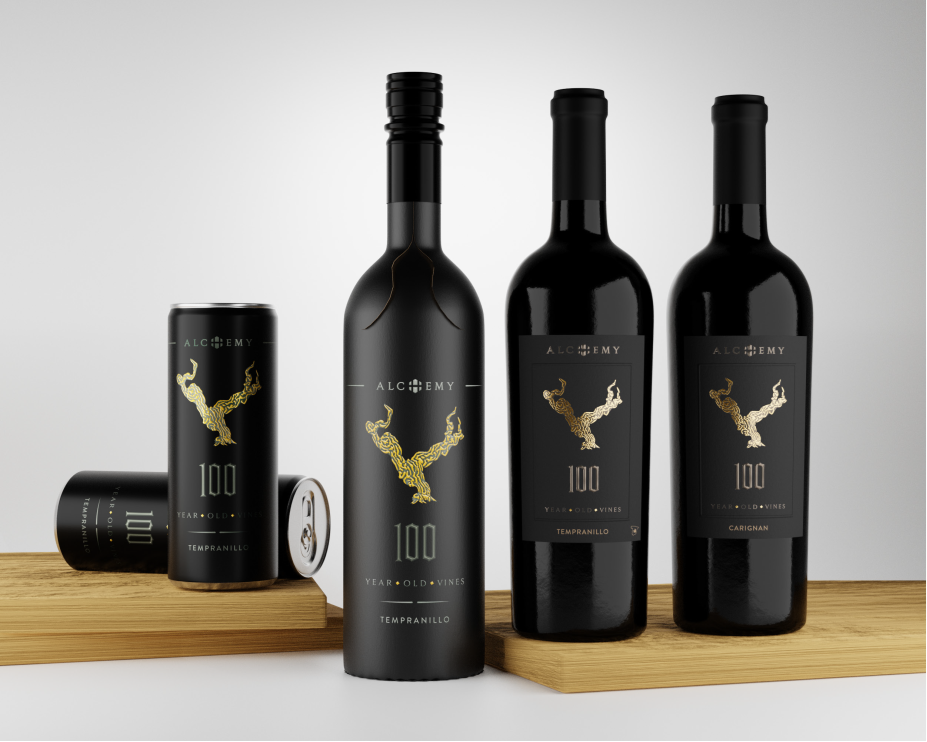Old vine wine launched in cardboard bottle
Alchemy ‘s 100 year old vine Tempranillo range
David Rowledge was inspired to create a range of old vine wine by the many great winemakers and partners with whom he has worked since founding Alchemy Wines in 2002: their passion for old vine heritage and quality motivated him to create a range of wines that would help to save, as he says, “…great old parcels being lost in a co-op’s tank or grubbed up”.
We spoke to David about the latest extension to his old vine range which combines old vine heritage with the most sustainable wine bottle on the market.
You’ve launched the world’s first old vine wine in a Frugal Bottle - how did this project come about?
I’ve been working with the Frugal team for about two years now, the initial introduction was made by an old school friend of mine who was making the screwcap toppers for Frugal, based locally in Suffolk.
What is the Frugal Bottle™ and what are the main sustainability credentials of bottling a wine in Frugal?
The Frugal Bottle is an alternative drinks packaging solution made from 94% recycled paperboard with a food grade pouch. The Frugal Bottle™ has the lowest carbon footprint on the market: 91.9g CO2e –84% lower than a 440g imported glass bottle (558.2g CO2e) and 34% lower than a bottle made from 100% recycled plastic (138.6 g CO2e). Its carbon footprint is four times less than a 345g lightweight glass bottle made in the UK (382g CO2e) and uses up to 77% less plastic than a plastic bottle. It weighs only 15 grams vs a 64g wine bottle made from 100% recycled plastic. The Frugal Bottle™’s water footprint is at least four times lower than a glass bottle. It takes 2.5 litres of water to make a lightweight 345g glass bottle made in the UK but only 0.6 litre to make a Frugal Bottle™.
100 year old Tempranillo vine
Your first wine in a Frugal Bottle is 100 year old vine Tempranilllo from Spain. Can you tell us a bit about the region the wine is from, the vines themselves and the winemaker?
I’d been bottling Alchemy’s 100 Year Old Vine Tempranillo in glass for around 4 years and wanted to combine the wonderful ecological heritage of the vines with the most sustainable bottle available: it felt like such a natural collaboration between old and new. The wine itself I make with my long-standing wine making partners in Spain – Bodegas Fernando Castro.
I introduced Castro to Frugal and they’ve had great success with it in Japan from the outset. They have really integrated it into their business, recently installing a new “Control Drop” filling line specifically for the Frugal bottle at their HQ in Santa Cruz de Mudela, in Central Spain.
The vineyard that the wine comes from itself is located about 40 km North East of Santa Cruz and we put the GPS co-ordinates on the Frugal bottle for total transparency. These are low yielding, 100yr+ old bush vines that are handpicked. Fernando and I want to make the grapes shine so our winemaking approach is minimal intervention but with a light touch of both French and American oak, to add extra complexity to the finished wine.
You export wine around the world. Which markets do you expect to be key for this range and why?
Each market responds differently to the Frugal Bottle and this is really based on consumer education about the positive credentials of the Frugal Bottle as a whole. There are some very traditional markets that will take some time for them to appreciate this new innovative format. We have interest in the UK, USA, Dubai, Scandinavia, Australia, Singapore, Vietnam - and Japan I’m sure will continue to grow.
Harvesting the 100 year old Tempranillo vines
What impact does the frugal bottle have on the cost of the end product? How does it affect the cost of shipping (if at all) and how does the cost compare to bottling in a standard glass bottle?
The Frugal business model centres around lowering the carbon footprint of the packaging from source. The objective is to have Frugal Bottle making machines in each major wine growing region, so everything can be produced locally and close to the point of filling. Our operations in California complete the sustainable element of the Frugal Bottle itself as we now have a local cardboard producer, pouch producer, and cap producer all sourced within a small radius of our hub in King City CA.
If you have a Frugal bottle making machine in your market the impact on your cost of dry goods is going to be more significant than if you have to have the empty frugal bottles shipped to the point of filling. However, over time as more Frugal Bottle making machines are sold and installed across the globe, the potential cost savings will become more widespread.
What is the drinking window for wine in a frugal bottle? Do you put the date of bottling on the packaging and would you expect an old vine wine to evolve slower/faster/ the same as a wine made from younger vines?
We have always made our 100 Year Old Vine Tempranillo for early drinking (hence the use of a touch of American oak) – the Frugal bottle will give a drinking window of 18 months to two years. The evolution of the wine in this new format will be very interesting, it’s too early to say with certainty at this time, but yes a lot number / date of bottling is detailed on the pack to help guide the end consumer.
How best for the Old Vine Conference community to get in contact with you with any questions or for advice?
You can reach me either via email – david@alchemywines.co.uk or mobile +44 7900 215 833 and it’s always a good idea to copy my colleague harriet@alchemywines.co.uk.
Interview & editing by: Belinda Stone



